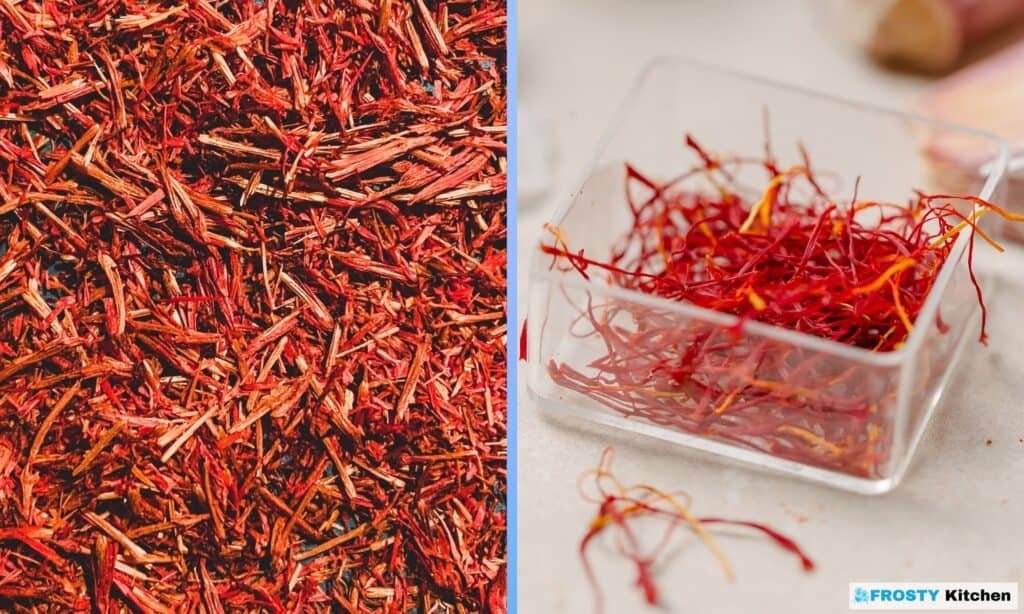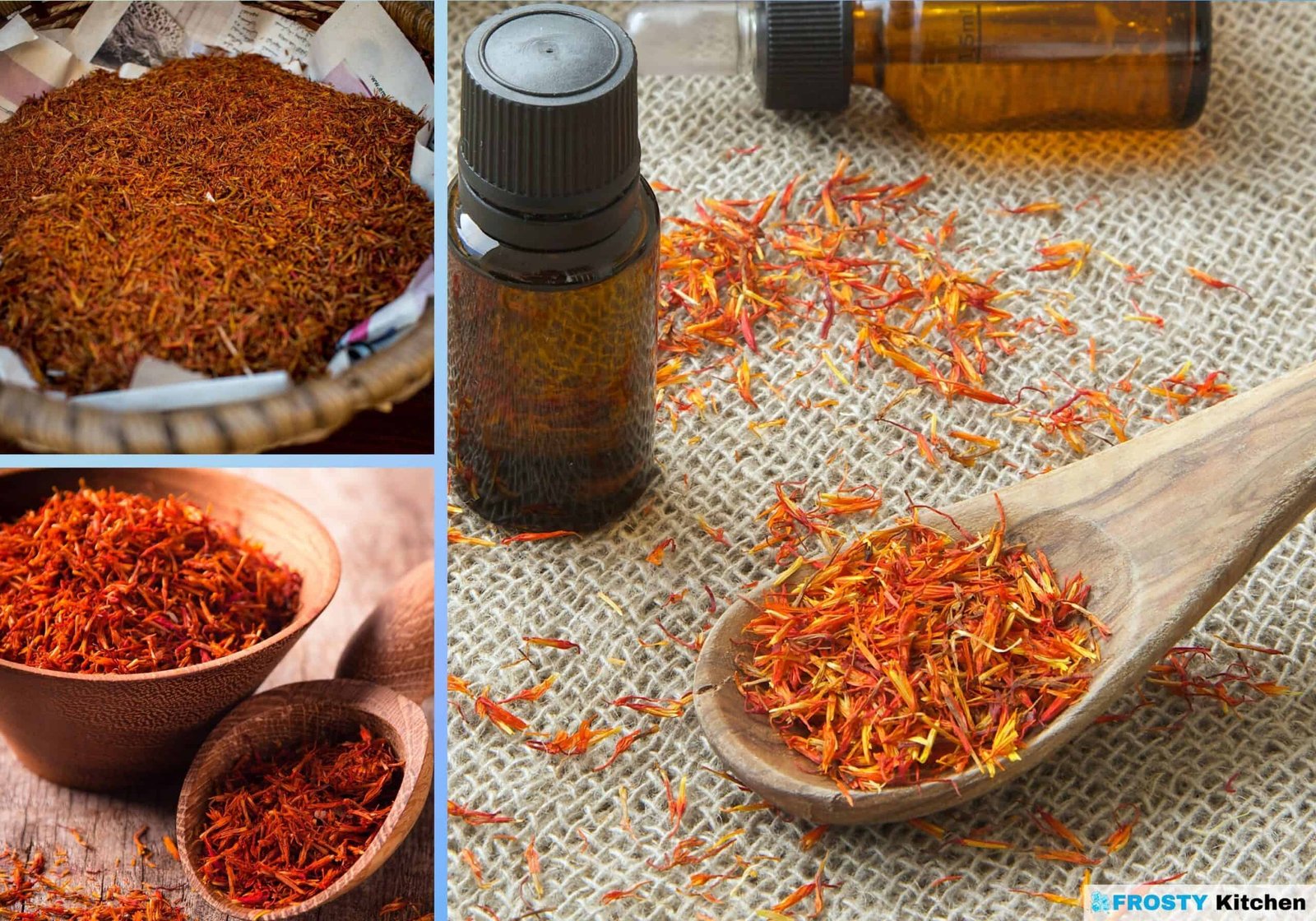Saffron, often referred to as the golden spice, has graced our dishes with its unique flavor and vibrant color for centuries. However, before it becomes the crimson thread we all adore, it starts as a seed. This guide aims to unveil the intricacies of storing Saffron Seeds, ensuring they germinate well to produce the cherished Saffron Crocus flowers.
What are Saffron Seeds?
Saffron seeds are the seeds of the Crocus sativus plant, from which the world-renowned saffron spice is harvested. These seeds are the starting point of a journey that culminates in the production of the world’s most expensive spice. The Crocus sativus plant is grown primarily for its stigmas, which, when dried, become the saffron spice we use in cooking.
Origin and History
Saffron has a rich history dating back over 3,000 years. Its use has been recorded in ancient civilizations across the globe, from Persia to Greece, Egypt, and Rome. The spice was, and continues to be, used for culinary, medicinal, and even spiritual purposes.

Nutritional Value
While saffron seeds themselves are not typically consumed, the saffron harvested from the Crocus sativus plant they produce is packed with health-promoting compounds:
- Antioxidant Properties: Saffron contains powerful antioxidants like crocin and safranal.
- Mood Enhancer: It may help alleviate symptoms of depression and anxiety.
- Heart Health: Saffron can contribute to heart health by improving blood circulation.
Importance of Proper Storage for Saffron Seeds
Proper storage of Saffron Seeds is crucial to ensure they remain viable and ready for planting. Given the value of the saffron they can produce, ensuring the seeds’ longevity and germination capability is of paramount importance.
General Lifespan and Preservation
With proper storage, Saffron Seeds can remain viable for planting for up to a year, sometimes longer if stored under ideal conditions.
Factors Affecting the Lifespan of Saffron Seeds
Understanding the factors that impact the lifespan of Saffron Seeds is vital for creating optimal storage conditions. This section delves into these factors in detail, aiding in prolonging the seeds’ viability and ensuring successful germination.
Temperature
Temperature plays a pivotal role in preserving the viability of Saffron Seeds. Cooler temperatures are preferable as they slow down the degradation process, maintaining the seeds’ germination capability for a longer period.
Exposure to Light
Excessive exposure to light can degrade the quality of Saffron Seeds, making it essential to store them in a dark place or in opaque, airtight containers to protect against light exposure.
Moisture Content
Moisture can be detrimental to Saffron Seeds, leading to mold growth and loss of viability. Ensuring a dry storage environment is crucial to prevent moisture exposure.
Packaging
Airtight packaging or vacuum-sealed containers can significantly prolong the viability of Saffron Seeds by preventing exposure to air, moisture, and light.
Air Quality
The quality of air, particularly its oxygen content, can affect the rate at which Saffron Seeds degrade. Ensuring airtight packaging will help in maintaining the seeds’ quality.
Signs of Spoiled Saffron Seeds
Identifying the signs of spoilage in Saffron Seeds is crucial to ensure their viability for germination.
Appearance
Any visible signs of mold, discoloration, or damage are clear indicators that the seeds may no longer be viable for planting.
Odor
A musty or off-putting odor can indicate mold growth or spoilage, signifying that the seeds may not be viable.
Preparation for Storage
Ensuring the seeds are clean and free from any debris or contaminants before storage is crucial for preserving their viability.
Picking the Right Packaging/Container
Selecting appropriate packaging or containers is essential for preserving the quality and viability of Saffron Seeds. Airtight containers or vacuum-sealed bags are excellent choices.
Recommended Types of Containers for Storage
Glass jars with airtight lids, vacuum-sealed bags, or BPA-free plastic containers are excellent choices for storing Saffron Seeds.
Step-by-Step Guide to Storing Saffron Seeds
Method 1: Dry Storage
- Step 1: Ensure the Saffron Seeds are clean and dry.
- Step 2: Transfer the seeds into an airtight container.
- Step 3: Store in a cool, dark, and dry place.
Method 2: Refrigerator Storage
- Step 1: Ensure the Saffron Seeds are clean and dry.
- Step 2: Transfer the seeds into an airtight, dark-colored, or opaque container.
- Step 3: Store in the refrigerator.
Frequently Asked Questions
Q1: Can Saffron Seeds lose their germination capability?
Yes, Saffron Seeds can lose their germination capability if not stored properly or if stored for an extended period.
Q2: How can I extend the shelf life of Saffron Seeds?
Storing Saffron Seeds in a cool, dark place in an airtight container can significantly extend their shelf life and germination capability.
Q3: When is the best time to plant Saffron Seeds?
The best time to plant Saffron Seeds is in late summer to early fall, ensuring they get enough cold exposure for germination.

